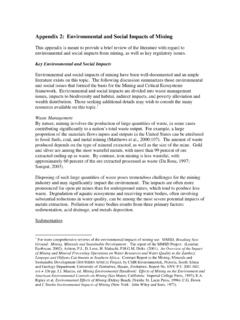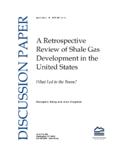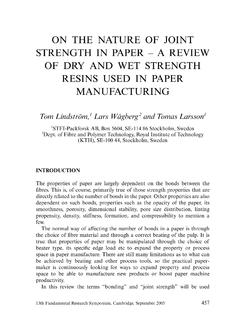Transcription of AmericanHerbal Pharmacopoeia - herbal-ahp.org
1 American Herbal Pharmacopoeiaand herapeutic ompendiumApril 1999 Editor: Roy Upton Herbalist AHPA ssociate EditorCathirose PetroneResearch AssociatesDiana Swisher BAAlicia Goldberg BABoard of DirectorsExecutive DirectorRoy Upton HerbalistTreasurerMichael McGuffinDirectorJoseph Pizzorno ND alerian ootValeriana officinalisAnalytical, Quality Control, and Therapeutic Monograph Copyright 1999 American Herbal Pharmacopoeia Post Office Box 5159, Santa Cruz, CA 95063 USAAll rights reserved. No part of this monograph may be repro-duced, stored in a retrieval system, or transmitted in any form orby any means without written permission of the American HerbalPharmacopoeia . Literature retrieval provided by CSS Associates,Mountain View, CAThe AHP is a not-for-profit educational corporation 501(c)(3).
2 Medical DisclaimerThe information contained in this monograph represents a syn-thesis of the authoritative scientific and traditional data. All effortshave been made to assure the accuracy of the information andfindings presented. Those seeking to utilize botanicals as part of ahealth care program should do so only under the guidance of aqualified health care professional. Statement of NonendorsementThe reporting on the use of proprietary products reflects studiesconducted with these preparations and is not meant to be anendorsement of these products. Design & CompositionCloyce WallSanta Cruz, CACover PhotoPhoto courtesy ofMartin Wall PhotographyPleasant Garden, NCAuthorsHistory, Commercial Sourcesand Handling, ToxicologyRoy Upton HerbalistAmerican Herbal Pharmacopoeia Santa Cruz, CABotanyAlison Graff PhDAmerican Herbal Pharmacopoeia Santa Cruz, CAMicroscopyElizabeth Williamson BSc PhDMRP harmS FLSC entre for PharmacognosyThe School of PharmacyUniversity of LondonLondon, EnglandConstituentsAmanda Bevill HerbalistThe HerbalistSeattle, WAAnalytical MethodsSubstantiating LaboratoriesVolatile Oil AssayForouz Ertl PhDBotanicals InternationalLong Beach, CAThin Layer ChromatographyEike Reich PhDCAMAGM uttenz, SwitzerlandMarisol Martinez BSBotanicals InternationalLong Beach.
3 CAHigh Performance LiquidChromatographyMark Lange PhDIndustrial LaboratoriesDenver, COWendy Wang PhDFrontier Cooperative HerbsNorway, IAFinal ReviewersReinder Bos PhDRijksuniversiteit GroningenUniversity Center for PharmacyDepartment of PharmaceuticalBiologyGroningen, The NetherlandsProf Dr Josef H lzlInstitut f r PharmazeutischeBiologieDer Philipps-Universit tMarburg/Lahn Marburg, GermanyTherapeuticsPharmacokinetics andPharmacodynamicsMarilyn Barrett PhDPharmacognosy Consulting ServicesRedwood City, CAReview Committee Mark BlumenthalAmerican Botanical CouncilAustin, TXMary Bove ND MNIMHB rattleboro Natural Health ClinicBrattleboro, VTFrancis Brinker NDSouthwest College ofNaturopathic MedicineTucson, AZGary Clapp PhDHauser LaboratoriesBoulder, COSteven Dentali PhDDentali AssociatesTroutdale, ORStaci EisnerTechnical DirectorExtractsPlusVista, CATrish Flaster MSBotanical Liaisons IncBoulder, COAdriane Fugh-Berman MDNational Institutes of HealthRockville, MDSteven Foster Specialist inMedicinal and Aromatic PlantsFayetteville, AKConstance Grauds RPhAssociation for Natural MedicinePharmacistsSan Rafael, CADaniel Gagnon Herbalist Herbs EtcSanta Fe, NMSilena Heron NDAmerican Association ofNaturopathic PhysiciansSedona, AZChristopher Hobbs LAc HerbalistInstitute for Natural ProductsResearchBonny Doon, CADavid Hoffmann MNIMHC alifornia Institute for IntegralStudies San Francisco.
4 CAProf Dr Johann JurenitschInstitute for PharmacognosyUniversity of ViennaVienna, AustriaGlen Larkin MSHoughton, MIAmanda McQuade CrawfordMNIMHOjai Center for PhytotherapyOjai, CADennis McKenna PhDMarine on St. Croix, MNProf Dr Beat MeierZeller AG Herbal RemediesRomanshorn, SwitzerlandLisa Meserole NDSeattle Healing ArtsSeattle, WAThomas Miller PhDAlpha Chemical and BiomedicalLaboratoriesPetaluma, CAJennifer Montgomery-Salguero RPhSeverna Park, MDJames Mutch RPhIntegrated Healing ArtsLos Altos, CAProf Dr Adolf NahrstedtEditor Planta MedicaWestf lische WilhelmsUniversit t M nsterM nster, GermanyAndrew Pengelly BA DBM NDDHomNational Herbalists Association ofAustraliaNew South Wales, AustraliaClarissa Smith HerbalistSeattle, WAAndrew Weil MDCollege of MedicineUniversity of ArizonaTucson, AZQun Yi Zheng PhDPure World Botanicals IncSouth Hackensack.
5 NJAmerican Herbal Pharmacopoeia Valerian Root April 1999 Page 1 NOMENCLATUREB otanical NomenclatureValeriana officinalis L., FamilyValerianaceaeDefinitionValerian consists of the fragments or whole fresh or dried rhizomes, roots, and stolonsof Valeriana officinalis L., whole botanical contains not less than (V/w)essential oil as determined on a dry weight basis. Powdered material contains not lessthan (V/w) essential oil as determined on a dry weight Names United States:ValerianFrance:ValerianeGermany:B aldrianItaly:AmantillaUnited Kingdom:ValerianHISTORYThe name valerian is said to be derived either from Valerius, who was reported tohave first utilized its medicinal properties, or from the Latin term valere, meaninghealth or well-being (Grieve 1976).
6 It has been used medicinally for at least 2000years. Dioscorides (ca. AD 40-80) wrote of several species of valerian (phu), andGalen (ca. AD 131-208) reported on its sedative effects (Pickering 1879). The namevalerian was first used around the 9th and 10th centuries and was an entry in thedomestic books of home remedies as early as the 11th century. The names valerian,amantilla, and fu were all used synonymously in the Alphita, a medieval vocabularyof the schools of Salernum (Fl ckiger and Hanbury 1879). It was first used as a treat-ment for epilepsy in the late 16th century reportedly by Fabius Columna, who relat-ed a personal cure, but subsequently was also reported to have relapsed. Fifty yearslater, additional reports of its effectiveness in three cases of epilepsy were reported byDominicus Panarolus.
7 Numerous reports by a wide variety of writers followed, andvalerian subsequently became routinely used for the treatment of various nervous dis-orders (Benigni and others 1971; Hobbs 1989). Respected American medical botanistWilliam Woodville reported that various European authorities ascribed antispas-modic, anthelmintic, diuretic, diaphoretic, and emmenagogue actions to valerianand related its usefulness for hysteria. However, Woodville himself did not considerit to be as effectual as proclaimed by other writers, an opinion reportedly supportedby the Edinburgh Dispensary(Woodville 1810).Valerian was widely used by Eclectic physicians. John King, in his highlyacclaimed American Dispensatory, cited valerian as being an aromatic stimulant andreported some unique indications, including its use for rheumatism, low grade fevers,and as an aphrodisiac, as well as its use in hysteria (King 1866).
8 John FinleyEllingwood in Systematic Treatise on Materia Medica and Therapeuticsconsideredvalerian to be a nervine and sedative for the treatment of hysteria, epilepsy, andmenopausal nervous anxiety (Ellingwood and Lloyd 1900). John Milton Scudder inSpecific Medications(Scudder 1903) cites valerian as having activity as a cerebralstimulant, analgesic, and sedative useful in nervous irritability, specifically when thecondition is a result of enfeebled cerebral circulation . Valerian was included in many editions of the United States Dispensatorywhichreported on its effect on the nervous system and its ability to produce drowsiness andsleep (Wood and Bache 1849). It was also listed in official compendia throughout theworld, including the British Pharmacop iain 1867 (British Pharmacop ia 1867),Photograph 1999 Martin Wall Photography, Pleasant Garden,NC.
9 Location Gaia Herbs, Brevard, NCPage 2 American Herbal Pharmacopoeia Valerian Root April 1999the United States Pharmacopeiafrom 1820-1936 (Hobbs 1989), and the UnitedStates National Formulary until 1946. Various species of valerian continue to be included in the pharmacopoeiae ofmany nations such as Belgium, France, Germany, Italy, Switzerland, and the UnitedKingdom, and a valerian monograph has been accepted by the United StatesPharmacopeial Convention for inclusion in the National Formulary(PharmacopeialForum 1998). Its widespread use as a sedative and antispasmodic in the United Statescontinues. Valerian preparations appear to be the most likely candidates to use as safeand effective, nonaddictive alternatives to conventional sleep Identification (Figures 1 2)Valeriana officinalisL.
10 Herbacious perennial, rhizomatous. Stem:Solitary, hollow,15-150 cm. Leaf:Basal and cauline, opposite, oddly once pinnately lobed, lobes 11-21 lanceolate, entire or dentate, basal leaves petiolate, cauline leaves subsessile toclasping. Inflorescence:Compound cyme, terminal or axillary, many pale pink towhite, strongly scented flowers. Flower: Calyx 5-lobed, lobes inconspicuous inflower, becoming elongate and pappus-like in fruit, corolla funnel-form, slightly sac-cate at the base, 5-lobed, tube 4 mm, lobes 1 mm, stamens 3, filaments attached tocorolla tube alternate to corolla lobes, ovary inferior, tri-loculate, uni-ovulate, only 1locule fertile, stigma tripartite. Fruit: Achene crowned by persistent calyx, lanceolate-oblong, mm, hairy or glabrous.







